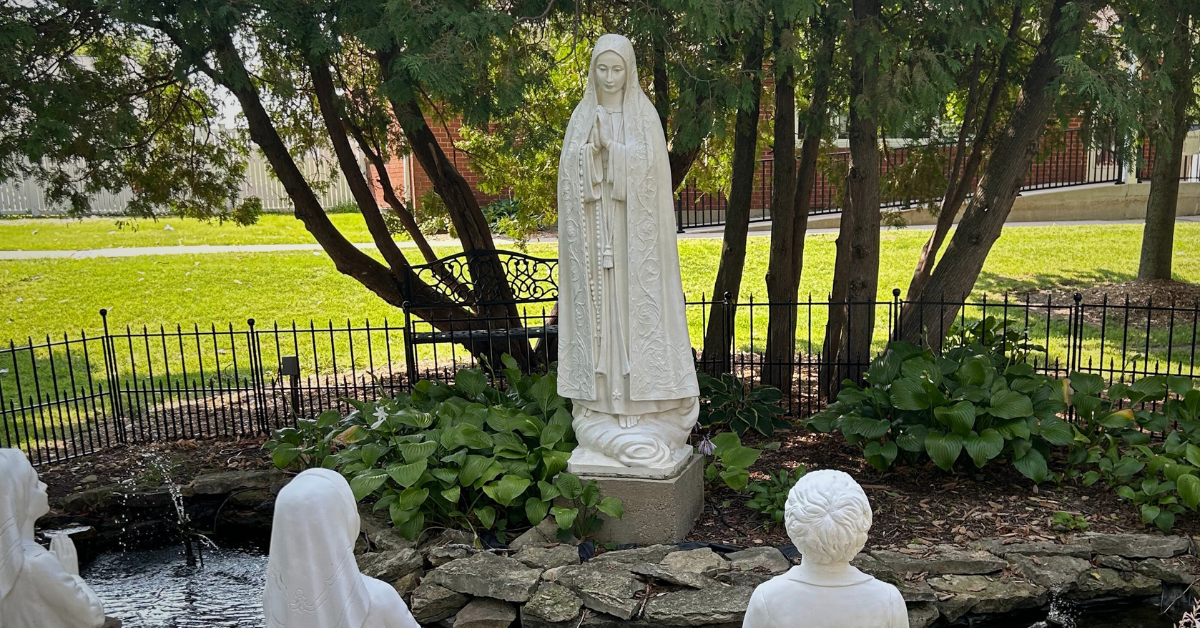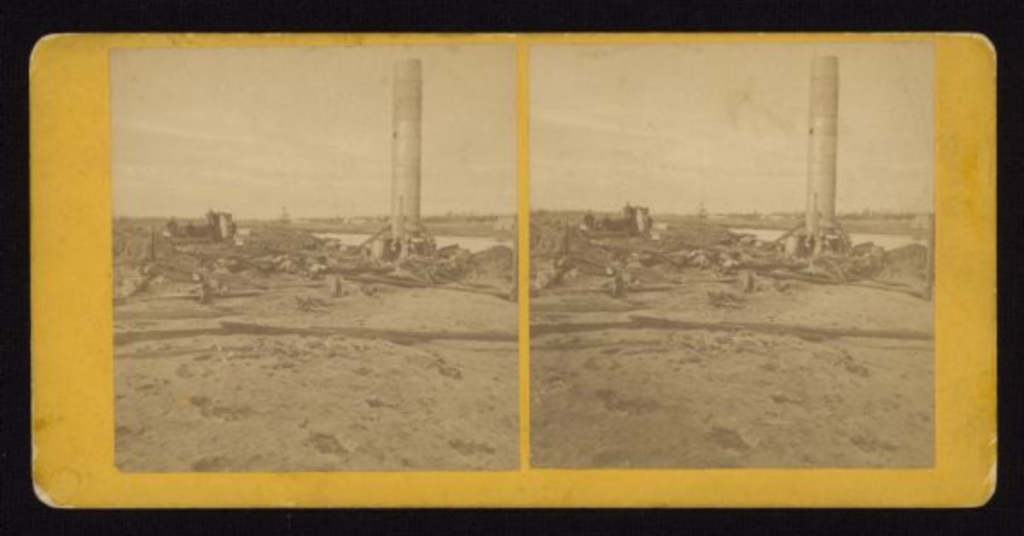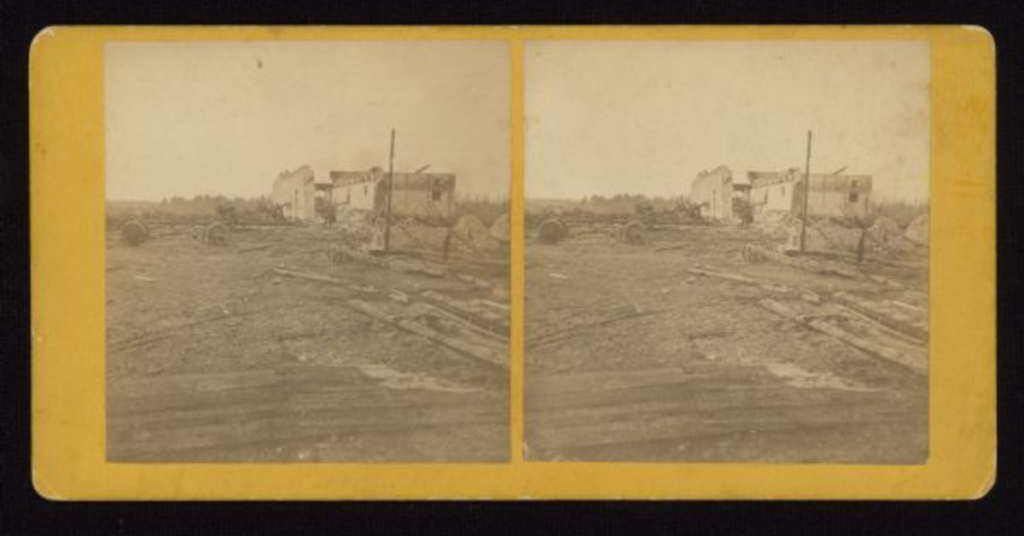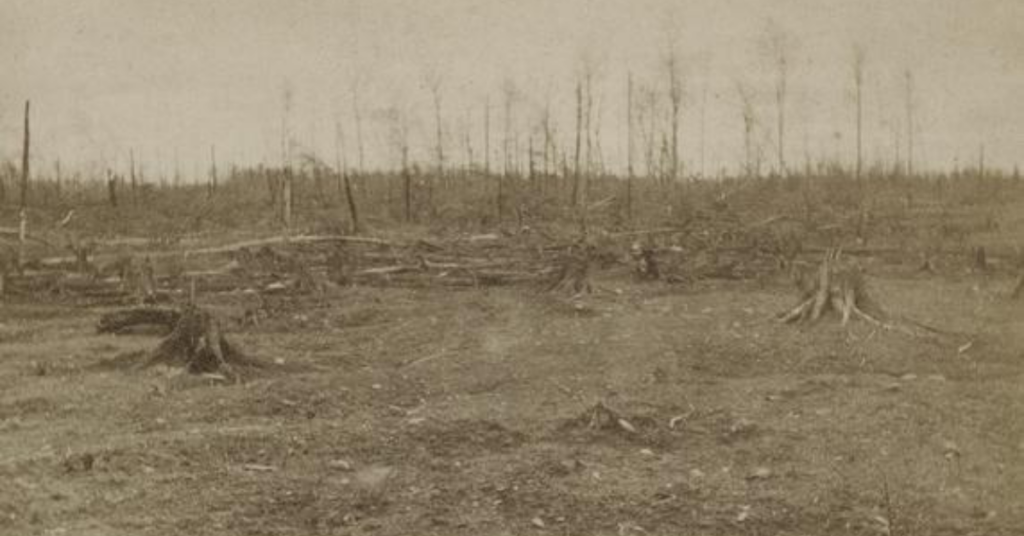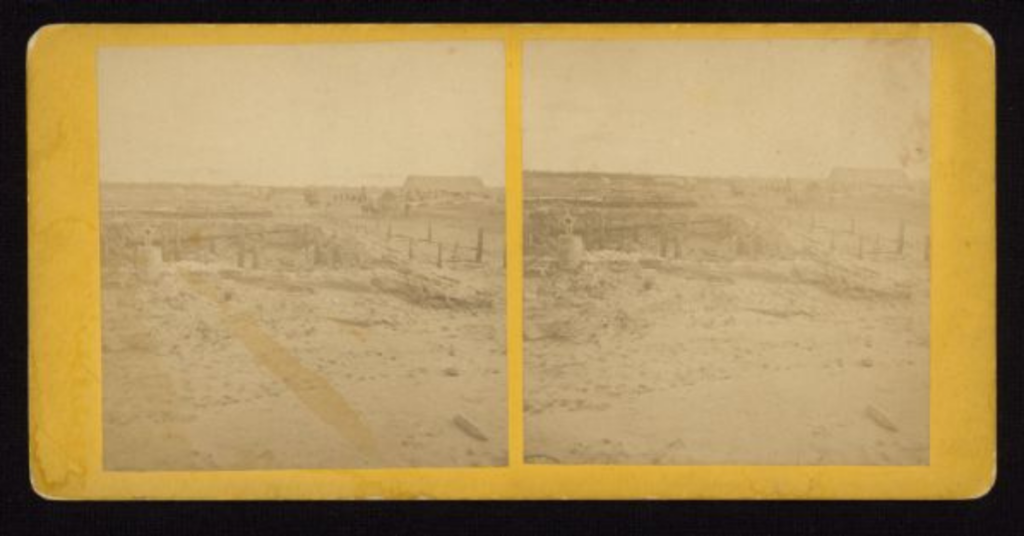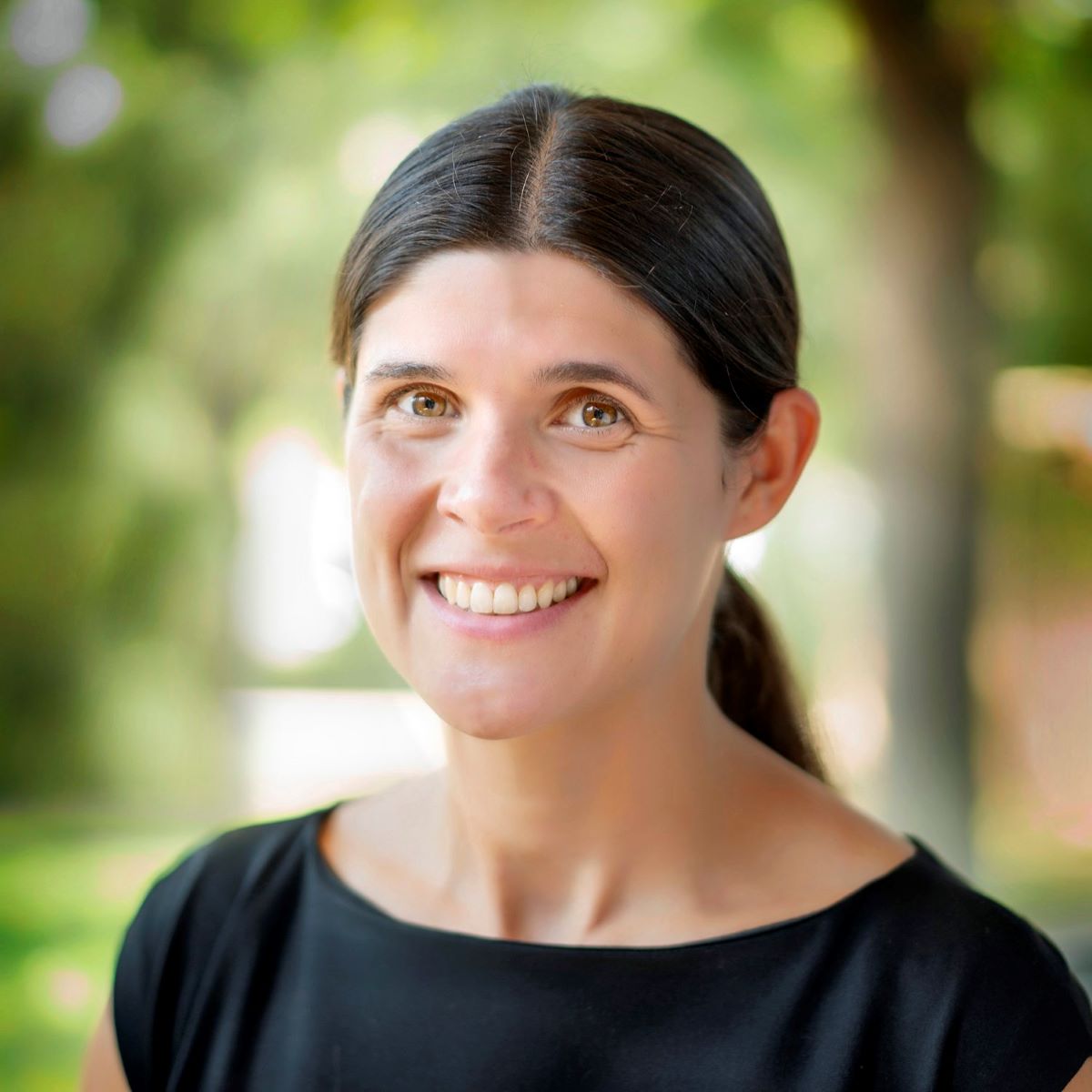A version of this essay originally appeared in the Winter 2024 Issue of Word & World.
For the past year, I have been working on a book about Christian mysticism. The project came about because I wanted to spend time with the mystics, and I thought this would be a great way to immerse myself in this intriguing, though often misunderstood, stream of Christian history and theology. I read scholarly analyses of different types of mystical thought; I read about the lives of these saints; and I read so, so many mystical texts. I found that once you peel back the layers of insider language (mystical union, ecstasy, rapture, etc.) and the miraculous and the strange (visions, prophesies, stigmata, etc.), you find a group of Christians who were completely devoted to God. While the mystics as a group are difficult to categorize or put in a box, the one thing I do feel comfortable stating is that their faith was experiential and wild. They did not just think about God. They were in deep and loving relationships with God.
I discovered that if I was to do the mystics any justice, I needed a more experiential approach to my writing. I employed scripture reading, prayer, and long walks in which I could dwell on both God and my work. Yet, I longed to do something more out of the ordinary. I wanted to go on a pilgrimage. The ultimate pilgrimage is perhaps the Camino de Santiago (there are numerous paths). Then there is the Via Francigena, which runs from Canterbury to Rome, and was featured in Timothy Egan’s book Pilgrimage to Eternity. A site of a Marian apparition was particularly appealing—Fátima and Lourdes both host millions of visitors a year, and the Basilica of Our Lady of Guadalupe in Mexico City is the most visited Catholic shrine in the world. But the truth was, I could not reasonably do any of these. I could not take a month to walk the European countryside. I could not drag my family through international travel to visit Catholic shrines during our already busy summer. I am a working mom with school-aged kids, and no longing for a pilgrimage to better understand historical mystics would change my responsibilities.
Then, I remembered, there was an option. There is only one officially approved Marian shrine in the United States, and it is four and a half hours from my home by car. It is not as famous or as visited as other shrines, such as Fátima or Lourdes—its approval came recently, but the accounts of miracles are numerous. I set to the task of convincing my kids that visiting a Marian shrine would be a fun end-of-the-summer road trip (they were surprisingly excited about it), and we headed to the unincorporated community of Champion, about fifteen miles outside of Green Bay, Wisconsin to visit the National Shrine of Our Lady of Champion.
Our Lady
The story of the Champion shrine starts with a woman named Adele Brise. When she was young, she wanted to join an Ursuline convent in Belgium, but instead she decided to join her family when they immigrated to the United States and settled in a Belgian community outside of Green Bay. As the story goes, in October of 1859, Adele was walking, possibly to a mill, when she saw a woman dressed in white standing between two trees. Adele was frightened and the woman faded away. The next Sunday, October 9 (the date becomes relevant later), Adele saw the woman again on her way to church but did not talk with her. This time she sought advice from her priest, who told her that if the vision was from God, she would see it again, and he encouraged her to ask the woman, in God’s name, who she was. On her way home from church, Adele did see the woman again. This time she asked her who she was and what she wanted of her.
The woman said she was Mary, the Queen of Heaven, and instructed Adele to gather local children and teach them. She said: “Go and fear nothing. I will help you.” Shortly after the apparitions, Adele’s family built a shrine on the spot where she had encountered Mary.
When Adele moved to the Green Bay area, there was a shortage of both clergy and churches. Wisconsin had become a state only eleven years earlier and the area was still in the process of being settled. The closest church to Adele was eleven miles away, and the local children certainly were not receiving adequate religious instruction. To follow Mary’s request, Adele first went house to house teaching children their catechism traveling miles and miles to do so. She was eventually joined by others, and the group began a community of Third Order Franciscan women. Later, with support of the Belgian community, a convent, a school, and a chapel were built.
If this is where the story ended, Adele Brise and her visions of the Virgin Mary likely would have faded over time. Perhaps she would have been a localized saint, and the story a point of pride for Catholics in the Green Bay area, but little more. However, this is not where the story ends.
The Fires
The year 1871 was unusually dry. It was only a matter of time before the prolonged drought combined with rapid deforestation of the area resulted in disaster for the Upper Midwest. And on October 8, two of the most catastrophic fires in US history broke out—the Great Chicago Fire and the Peshtigo Fire. Not only did the fires start on the same day; they began at nearly the same hour—they started in the evening and raged through the night. The Chicago Fire is the better known, and the devastation was shocking. Over 17,000 buildings burned and about 100,000 people, roughly a third of the city, found themselves homeless. The death toll was surprisingly low though, all things considered; it is estimated that only about 300 people died in the fire.

Over two hundred miles north a far deadlier fire raged; in fact, to this day, the Peshtigo Fire remains the deadliest fire in US history. The fire takes its name from the town of Peshtigo which was completely destroyed. On the morning of October 8, Peshtigo had an official population of 1,700, by the next day, less than 1000 survived and only one structure remained standing. The fire did not stay contained in Peshtigo though, it burned more than 280,000 acres in Oconto, Marinette, Shawano, Brown, Kewaunee, Door, Manitowoc, and Outagamie counties. It is believed that at least 1,500 people died, and a conservative estimate of property loss is $5,000,000.
No one knows definitively what sparked the blaze in Northeastern Wisconsin that day, but information gathered from eye-witness accounts and conjecture has suggested that railroad workers were clearing land for tracks and started a brush fire which grew out of control due to the drought and high winds. A description from a survivor of the fire, a Catholic priest from Peshtigo, by the name of Peter Pernin, gives a harrowing account of what people endured that night:
The air was no longer fit to breathe, full as it was of sand, dust, cinders, sparks, smoke, and fire. It was almost impossible to keep one’s eyes unclosed, to distinguish the road, or to recognize people, though the way was crowded with pedestrians, as well as vehicles crossing and crashing against each other in the general flight. Some were hastening toward the river, others from it, whilst all were struggling alike in the grasp of the hurricane. A thousand discordant deadening noises rose on the air together. The neighing of horses, falling of chimneys, crashing of uprooted trees, roaring and whistling of the wind, crackling of fire as it ran with lightning-like rapidity from house to house—all sounds were there save that of the human voice. People seemed stricken dumb by terror.
There are a few pictures of the devastation, available through the Wisconsin Historical Society, that show the aftermath, and it is shocking anyone survived that night.
The Miracle
Champion is on the other side of the bay, but it did not matter. Almost twelve years to the day of Adele’s third vision of the Blessed Virgin, the great fire barreled towards the shrine’s grounds. Desperate, the people in the surrounding countryside flocked to the chapel hoping for divine protection. When they arrived, Adele and her sisters were praying for Mary’s intercession. The people, carrying the statue of Mary, processed around the sanctuary, prayed the rosary, and sang hymns through the night. It is believed that rain finally put out the fires the next morning.
Everything surrounding the shrine’s grounds was destroyed. All the surrounding livestock was killed and even the wells went dry. The fire charred the outside of the fence that enclosed the shrine’s grounds, but the flames did not touch anything inside. Every single person and animal who was at the shrine that night survived. Father Pernin later described the Champion shrine as an “emerald in a sea of ashes.”
Following the miraculous events of that night in 1871, people began to celebrate this miraculous event on its anniversary. Each year, thousands of pilgrims come to pray through the night, from October 8 to 9, to celebrate the sparing of the shrine and all the people who took shelter there. This event still happens annually.
The Decree
In 2009, the bishop of Green Bay opened a formal investigation into the Marian apparitions that occurred in 1859. According to his decree, three Marian experts studied the history of the apparition and all extant documents, letters, and written testimonies to determine the veracity of the testimony regarding the events of 1859 to determine if there was enough evidence to suggest that the events were indeed of supernatural origin. After the investigation was concluded, the bishop decreed:
It remains to me now, the Twelfth Bishop of the Diocese of Green Bay and the lowliest of the servants of Mary, to declare with moral certainty and in accord with the norms of the Church: that the events, apparitions, and locutions given to Adele Brise in October of 1859 do exhibit the substance of supernatural character, and I do hereby approve these apparitions as worthy of belief (although not obligatory) by the Christian faithful.
Both the miracle of Adele’s radically changed life and the salvation from the Peshtigo Fire were mentioned as evidence for the positive outcome of the investigation. In addition to these dramatic miracles, there have been other reported graces and healings.
Since 2010, Champion has been an officially approved Marian shrine. Of course, this was only adding validation to what many already believed. In the bishop’s decree, he mentions that every single one of his predecessors had been to the Champion shrine and each had partaken in special Masses to commemorate the Lady of Champion. It was considered a holy site by the people long before it received official approval.
Car Pilgrimage
Years ago, I came across a painting at the Chicago Institute of Art called Pardon in Brittany painted by French artist Gaston La Touche. The painting depicts pilgrims forming a crowd. One woman sits on horseback with a child, but everyone else walks, mostly dressed in white. They carry candles that seem to glow beyond the confines of the canvas. I was taken aback by the beauty of the scene. Our trip to the Champion shrine was nothing like that.
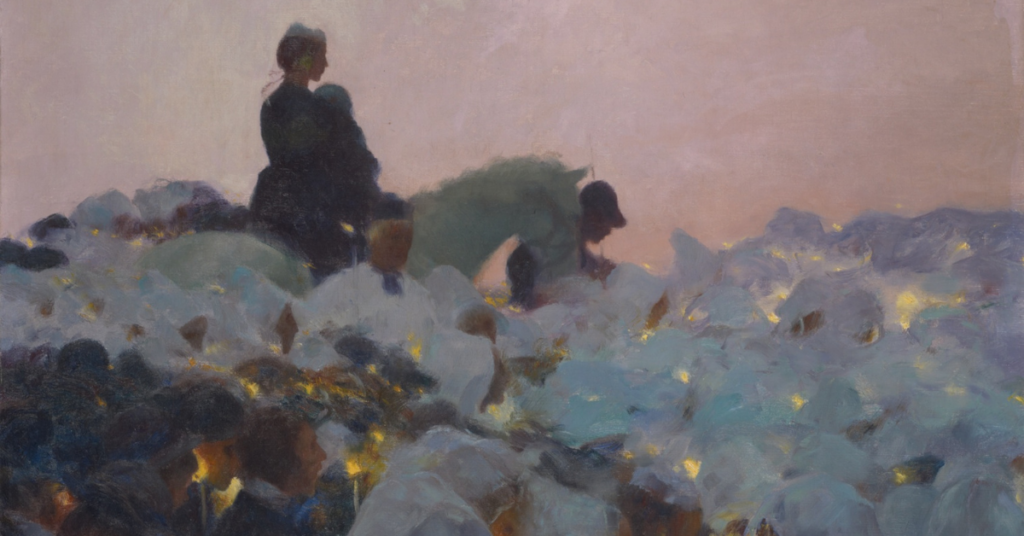
I got up early and packed up too many snacks and an embarrassing number of electronic devices to take with us in the car. We started off strong, but as the miles wore on, the trip started to feel a bit like a penance. But overall, besides too many stops, and a few moments of panic when a wasp got into the car, it was a good road trip. As we got closer, we all felt a little nervous. We traveled 300 miles to see this shrine; would it be worth it?
When we arrived at the Champion shrine, we were not sure where to go or what to do. Due to this lack of direction, we simply walked into the closest building, which turned out to be a gathering place (it had the feel of an event center, but with statues and holy water). We quickly realized this was not where we wanted to be, but we were able to find pamphlets including one that included a map and a self-guided tour. The Champion complex consists of Mother of Mercy Hall, which was where we started, a history center, an apparition chapel, an apparition oratory, Adele’s gravesite, a gift shop, a café, and a rosary walk and the station of the cross, both which are located outside. Over the next hour we managed to visit all the buildings and attractions.
The highlight of the shrine is the oratory. According to the shrine’s brochure, the “Oratory is an essential element to the Shrine experience as its focus revolves around Mary’s appearance near this location, allowing pilgrims the chance to connect with God through the intercession of Mary.” I would attest to that statement. The oratory is under the main chapel, and it is beautiful. The walls are lined with prayer candles, most in blue and white—the colors associated with Mary. In the center is a statue of the Virgin Mary; she is dressed in white and blue with a crown of stars on her head. There are some pews and kneelers facing the statue. The room is warm and peaceful. When we arrived, there were a few people kneeling in silent prayer, and after my children lit candles, we joined them.
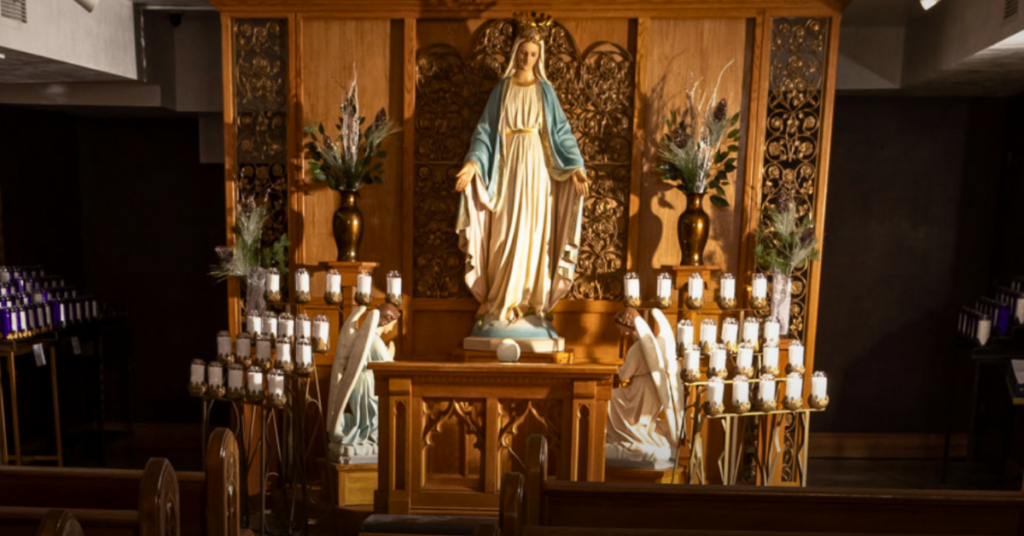
While in the oratory, surrounded by the candles, I felt a sense of holiness permeate the space. My heart was warmed, and I felt moved by God’s love for humanity. My daughter looked over and asked me if I was crying. I was. My son whispered that this made the drive worth it. Yes, it did.
As we quietly left our pews, we noticed a collection of relics at the back of the room. Later we learned that there are a total of twenty-two relics housed in the oratory. I was thrilled to find one from my favorite saint, Teresa of Ávila. For those who are not Catholic, relics can seem macabre and odd, but they have been collected since the earliest days of Christianity, though they became particularly popular in Medieval Europe. It is a way to feel closer to the saints, and it is common to find them in churches and shrines. After looking through the relics, we walked outside, the light too bright after our time underground. We walked the Stations of the Cross and took pictures with some statues around the grounds. My kids found an adorable little farm cat curled up on a bench outside the chapel, which I would not let them take home. As we walked to the car, we laughed because the farm across the road was selling “apparition soil” for ten dollars a bag. A sign promised it would make a great souvenir.
We headed home.
“Holy Mary, Mother of God, pray for us sinners…”
As a Catholic who teaches at a Lutheran seminary, I know that Mary is one topic on which Protestants and Catholics do not see eye to eye. I cannot begin to count how many times I have been asked, “Why do Catholics worship Mary?”
We don’t.
“Why would you petition Mary (or any of the saints) when you can just pray directly to God?”
This is another question I often receive, and I think that Edith Stein, theologian, mystic, and canonized saint explained the Catholic position beautifully when she wrote:
Mary is the perfect symbol of the church because she is its prefigurement and origin. She is also a unique organ of the church, that organ from which the entire Mystical Body, even the Head itself, was formed. She might be called, and happily so, the heart of the church in order to indicate her central and vital position in it…Just as certainly, through her unique relation with Christ, Mary must have a real—that means here a mystic—relationship with the other members of the church.
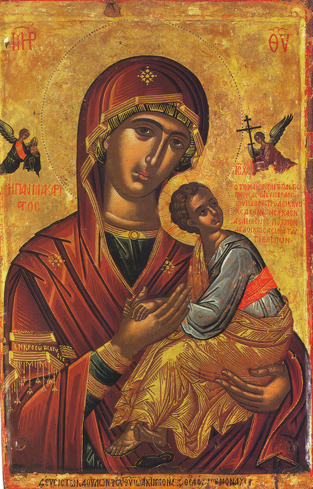
Stein’s assertion is not universally shared, though I do find it a typical Catholic understanding of Mary. The Blessed Virgin is not just some person. She is the Theotokos, or God-bearer, as is affirmed by our ecumenical creeds, which Catholic, Orthodox, and Protestant Christians all profess. She always points people to her Son, but she is also a powerful symbol of love and faith.
I certainly did not go to the Champion shrine expecting to see visions of the Virgin Mary myself. I went because I wanted to physically experience a space that has been declared the site of a great miracle; a place where Mary, Queen of Heaven, appeared to a young immigrant woman, changing her life forever. Mary’s appearance is, of course, the main miracle, but there was also the salvation from the fire, plus the many smaller miracles—experienced by hopeful pilgrims, that were never investigated or decreed as genuine, but were powerful and meaningful for so many. For more than 150 years, people have traveled great distances just to be closer to God through the intercession of Our Lady. That is what I wanted to experience.
In the end, did my modern car pilgrimage help me understand the mystics any better? Did walking the grounds of a long-ago Marian apparition help me understand those Christians who had a wild and experiential faith? How did it impact my own faith? The answer is complicated. As I drove away from the shrine, I felt a vague sense of disappointment. I had four and a half hours of driving ahead of me and two kids who did not particularly want to spend that long in the car. The shrine was peaceful and lovely, and I do believe it is a genuine holy site, but I did not feel changed. Yet, over the following days and weeks, my thoughts kept returning to the oratory. The sense of holiness that filled the space, and that moment when I reflected on God’s love, has stayed with me. It was not a dramatic moment—nothing like the intense visions and experiences that some of the mystics of old wrote about, but it was a soft and subtle change in my own faith. I also have seen that it was a good experience for my children. They speak fondly of it, and it seems to have had a positive impact on their faith.
The Champion shrine has a special appeal for Catholics, but I would recommend it to anyone. No, you likely will not see an apparition yourself, but it is a place of peace and prayer that can appeal to all. So, if you ever find yourself in the Green Bay area, take an hour of your time to stop by. Whether or not you believe that Mary once appeared there to a young woman, it has been a gathering place for the faithful and the hopeful for well over 150 years, and that alone can be a moving and inspiring experience.
